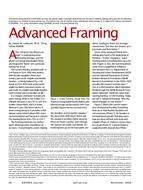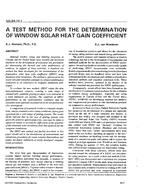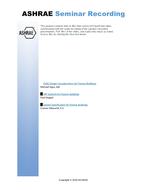For optimal longevity of the stored objects, museum storage buildings require a very stable interior climate, with only minimal and slow variations in temperature and relative humidity. Often extensive heating, ventilating, and air conditioning is installed to provide these stable indoor conditions. The resultant significant energy and maintenance costs are currently motivating a paradigm change: passive control, via the thermal and hygric inertia of the building, is gaining foothold in the museum conservation and building physical community.
In this paper we report a hygrothermal performance optimization of a museum storage building related to an existing storage in Vejle (Denmark). The current building design already incorporates passive control concepts: thermal inertia is provided by the thick walls, the ground floor, and its underlying soil volume, and hygric inertia is provided by the thick walls of light-weight concrete. The design promise was that after a few years of dehumidification, the moisture contained in the fresh constructions would be brought down to a level corresponding with the desired interior climate, after which the passive control would eliminate the need for dehumidification. Four years after completing the construction, however, continuous dehumidification is necessary to maintain acceptable humidity levels in the storage rooms. This paper presents an analysis of this contradiction and shows that such complete passive conditioning is an illusion. The general levels of humidity of the exterior environment are too high, which leads to unfavorable conditions for the interior environment. Continuous dehumidification is required, and a new concept for optimization of the building’s thermal insulation and infiltration behavior in relation to the required dehumidification load is invented.
The investigation shows that the impact of thermal improvements is minor, while any intervention in the airtightness has a considerable effect. The combination of the two brings the dehumidification needs down by 79%, with a minor price to be paid in the form of an increased potential for mechanical and chemical decay.
Citation: Thermal Performance, International Conference, 2010
Product Details
- Published:
- 2010
- File Size:
- 1 file , 3 MB
- Product Code(s):
- D-BuildingsXI-10


